Books, academic journal articles, reports, research summaries, fact sheets, and more – focused on youth, social media, and emerging technologies.

What is Cyberbullying?
“What is Cyberbullying?” is one of the most frequent questions we are asked because many know what it is when it happens, but have trouble wrapping succinct descriptive words around it. Formally, we define it as “willful and repeated harm inflicted through the use of computers, cell phones, and other electronic devices” (from Bullying Beyond […]
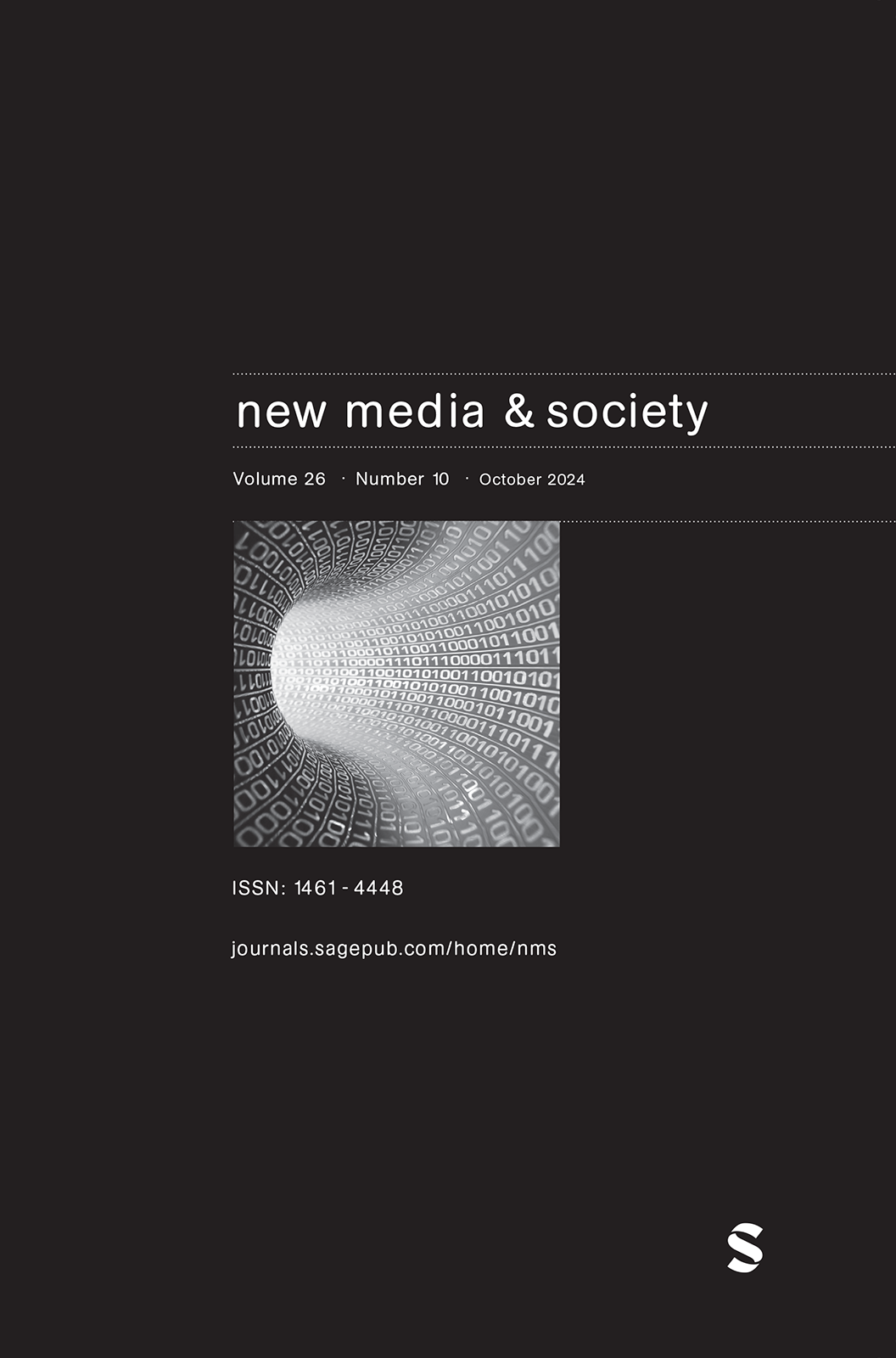
Metaverse Risks and Harms Among US youth: Experiences, Gender Differences, and Prevention and Response Measures
Research indicates that participation in metaverse environments and with virtual reality(VR) is increasing among younger populations, and that youth may be the primarydrivers of widespread adoption of these technologies. This will more readily happenif their experiences are safe, secure, and positive. We analyze data from a nationallyrepresentative sample of 5005, 13- to 17-year-olds in the […]
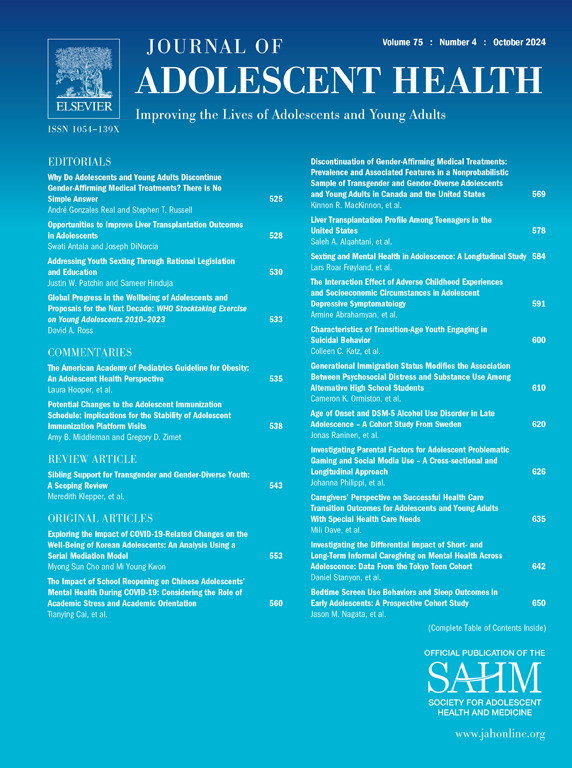
Addressing Youth Sexting Through Rational Legislation and Education
Sexting is defined as “the sending or receiving of sexually explicit or sexually suggestive images or videos,” usually via mobile devices. Our research indicates that at least 14% of US middle and high school students report that they have sent explicit images to others, while about 23% have received these kinds of images from their […]

The Nature and Extent of Youth Sextortion: Legal Implications and Directions for Future Research
Sextortion, the threatened dissemination of explicit, intimate, or embarrassing images of a sexual nature without consent, is an understudied problem. Despite a recent increase in reported incidents among adolescents in the United States, little is known about the nature and extent of sextortion among this population. The current research explores sextortion behaviors among a national […]
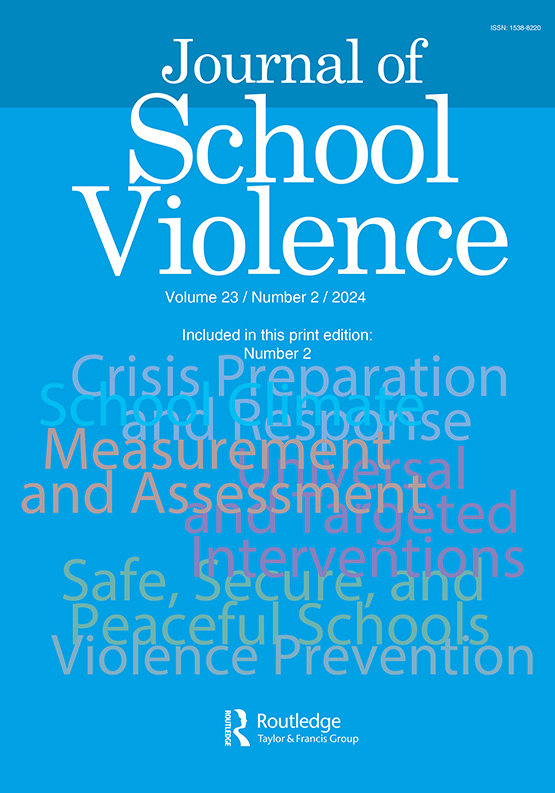
Adolescent Digital Self-Harm Over Time: Prevalence and Perspectives
Digital self-harm, the anonymous online posting, sending, or otherwise sharing of hurtful content about oneself, has not received the same amount of scholarly scrutiny as other forms of self-directed abuse. In the current paper, we analyze three independent national surveys of U.S. teens (aged 13–17, M = 14.96) in repeat cross-sectional studies conducted in 2016 […]
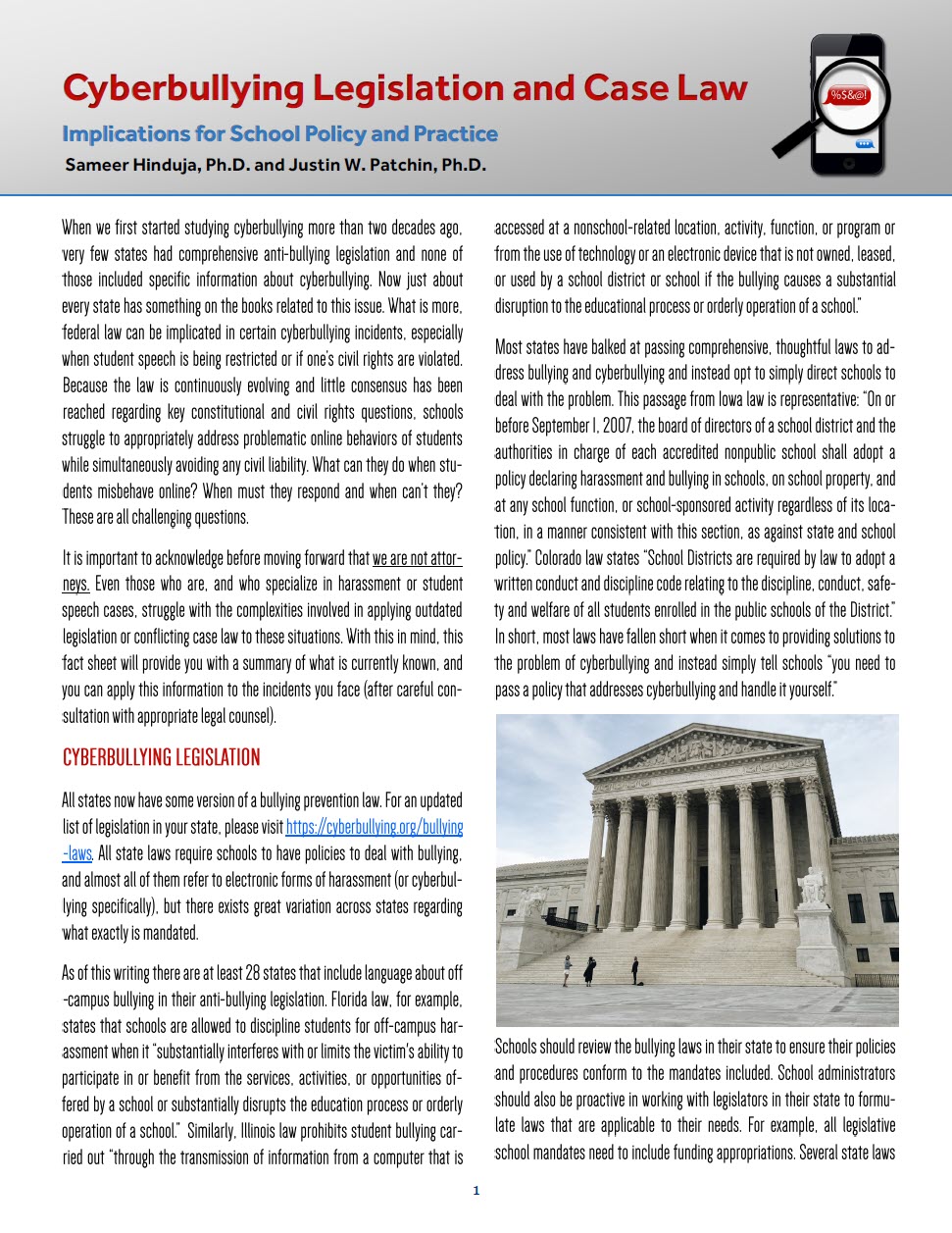
Cyberbullying legislation and case law: Implications for school policy and practice
This Fact Sheet provides a summary of important court cases and pending legislation that can help school administrators evaluate and improve their current cyberbullying policies and procedures. Hinduja, S. & Patchin, J.W. (2024). Cyberbullying legislation and case law: Implications for school policy and practice. Cyberbullying Research Center. Retrieved [insert date], from https://cyberbullying.org/cyberbullying-legal-issues.pdf Download PDF
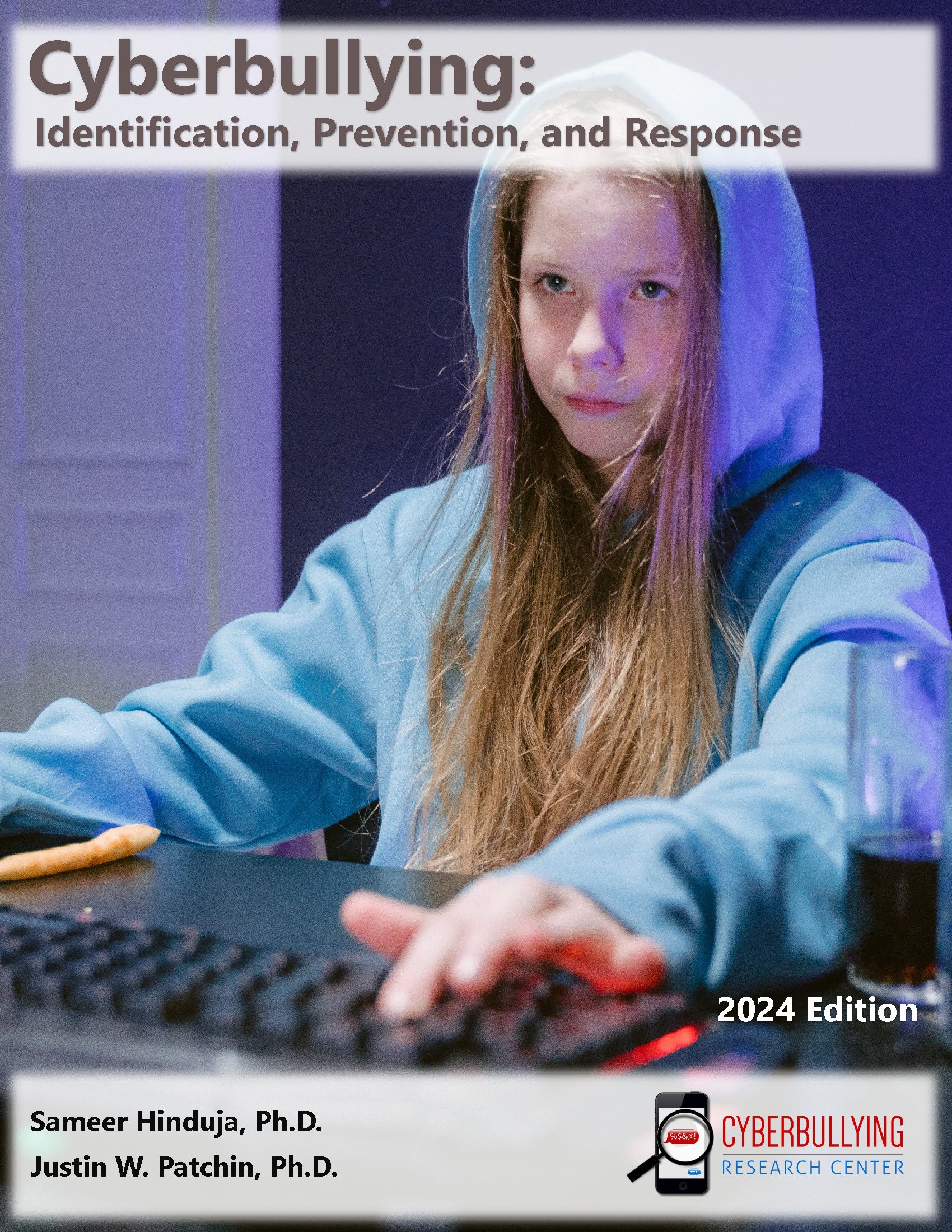
Cyberbullying Fact Sheet: Identification, Prevention, and Response
UPDATED for 2024! This detailed guide is a nine-page summary – filled with as much useful information as possible – to equip educators, parents, and other youth-serving adults to spot cyberbullying, respond to it appropriately and meaningfully, and to prevent its future occurrence among those they care for. If you only have time to read […]
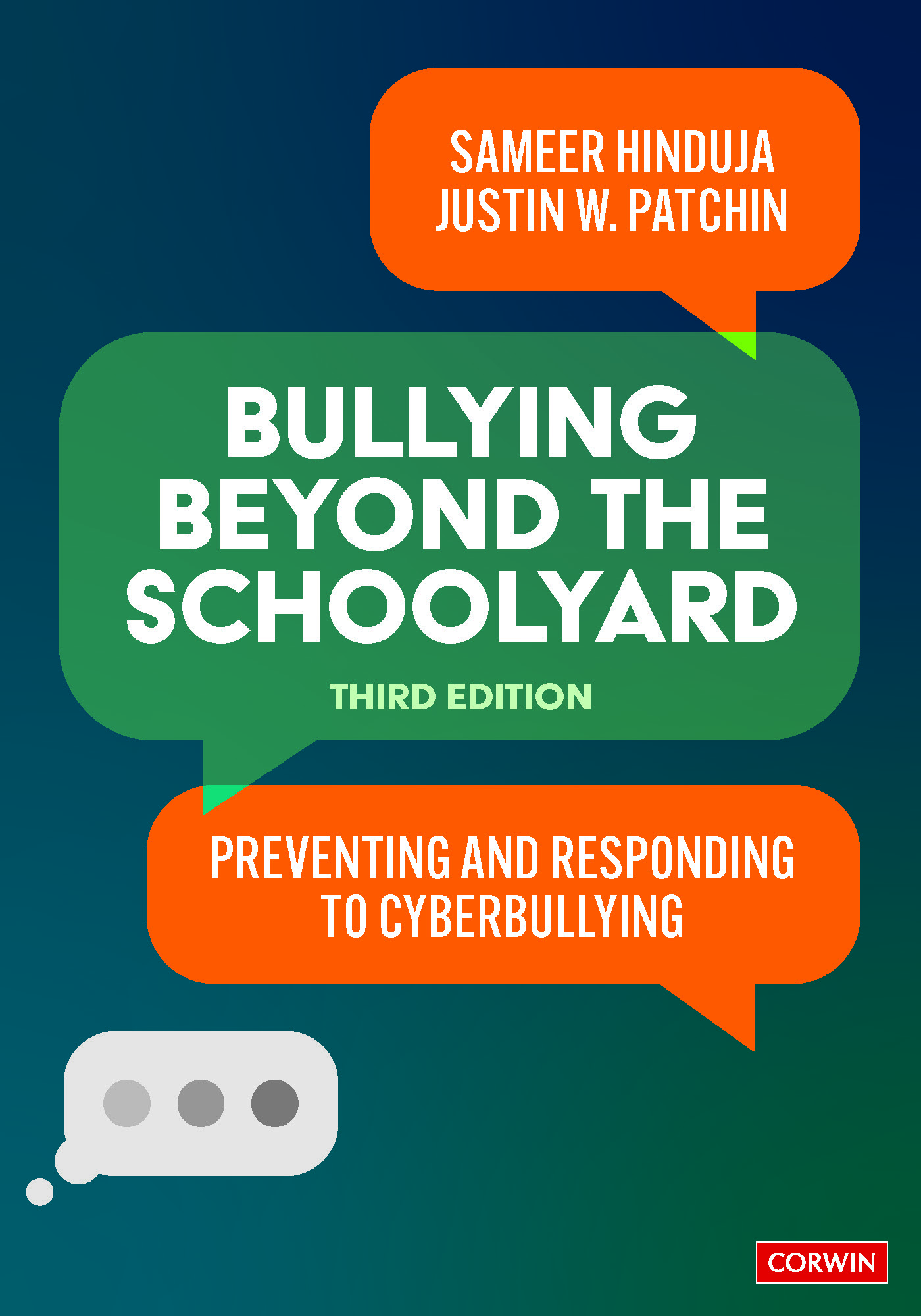
Bullying Beyond the Schoolyard: Preventing and Responding to Cyberbullying (3rd edition)
We’ve updated our award-winning, best-selling book and hope you check it out, given that so much has changed since the 2nd edition. We remain fully committed to supporting educators, youth mental health professionals, families, community leaders, and others who serve young people as they navigate social media and gaming issues and seek to promote well-being […]

Cyberbullying Among Asian American Youth Before and During the COVID-19 Pandemic
PURPOSE Early in the COVID-19 pandemic, there was a concern that cyberbullying incidents would increase as youth were spending more time online. Additionally, reports emerged that Asian American citizens were being disproportionately targeted due to the purported origination of the disease. The current study explores whether cyberbullying incidents increased among adolescents overall—and Asian American youth […]
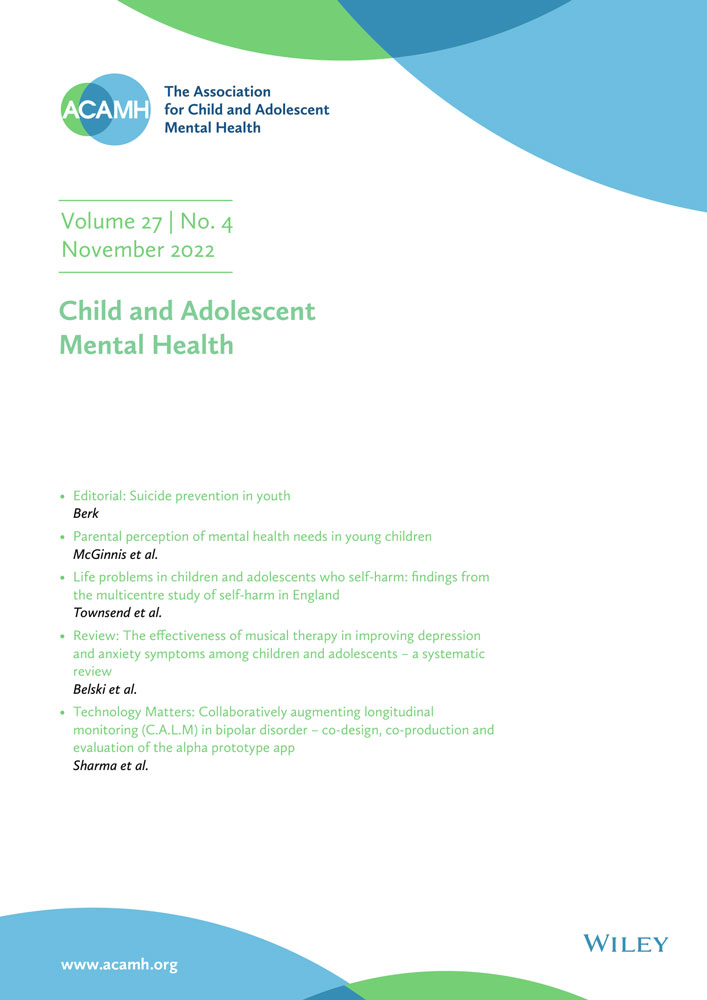
Digital Self-Harm and Suicidality Among Adolescents
Background Research on digital self-harm – the anonymous online posting, sending, or otherwise sharing of hurtful content about oneself – is still in its infancy. Yet unexplored is whether digital self-harm is related to suicidal ideation or suicide attempts. Methods In the current study, survey data were collected in 2019 from a national sample of […]

